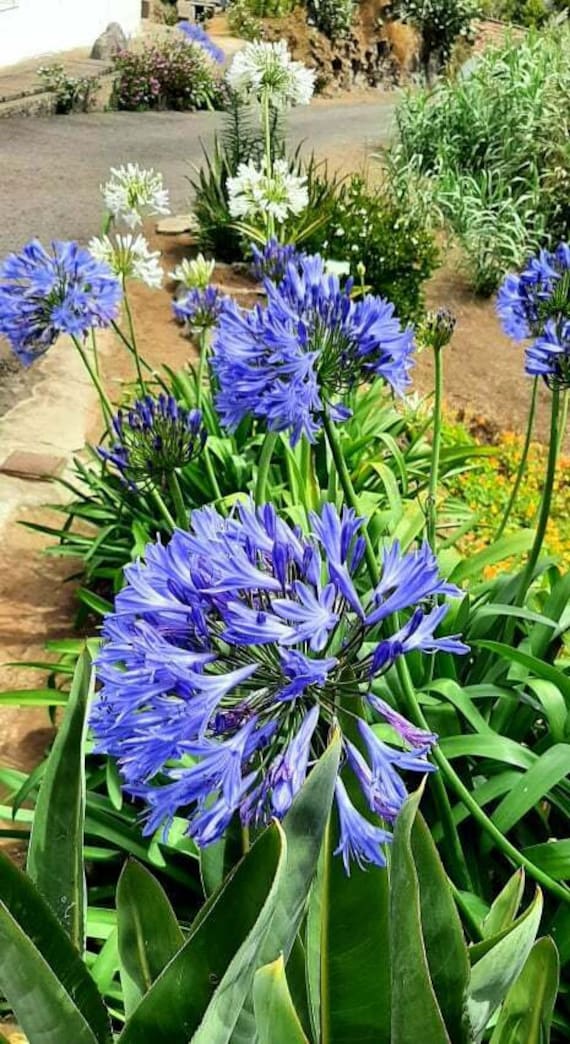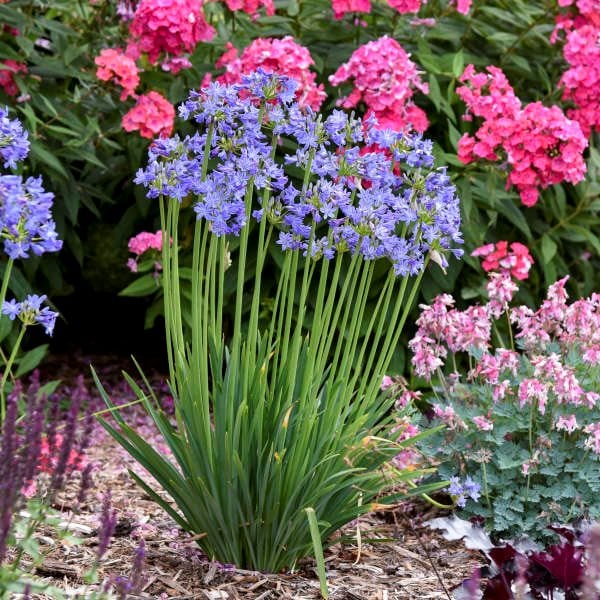Grasping the Art of Agapanthus Care: Necessary Steps for Healthy Development and Lively Blossoms
In the realm of horticulture, the farming of agapanthus stands as a satisfying endeavor for those who look for to nurture these stylish blooming plants. With their striking flowers and graceful vegetation, agapanthus has recorded the attention of gardeners worldwide. Nonetheless, accomplishing ideal growth and dynamic blossoms requires a nuanced method that incorporates different essential actions. From selecting the right variety to grasping pruning methods, the trip towards cultivating growing agapanthus plants is complex and holds the vital to opening the complete possibility of these botanical treasures.

Choosing the Right Agapanthus Selection

When selecting the right Agapanthus range for your garden, think about variables such as environment suitability, blossom color, and development routine. Agapanthus, commonly understood as Lily of the Nile or African lily, is available in a range of colors varying from shades of blue and purple to white. Select a bloom color that matches your existing yard scheme to develop a harmonious landscape. Additionally, take into consideration the environment in your region to make certain the Agapanthus variety you choose can grow in your particular conditions. Some selections are more forgiving of cool temperature levels, while others like warmer climates. Understanding the development behavior of different Agapanthus varieties is critical for proper positioning within your garden. Some varieties have a clumping growth behavior, ideal for boundaries or containers, while others have a more spreading nature, appropriate for ground cover or mass plantings. By carefully examining these elements, you can select the perfect Agapanthus selection to improve the elegance of your yard.
Suitable Growing Conditions
Thinking about the ideal environmental needs is important for effective Agapanthus farming. Agapanthus plants are sensitive to chilly temperature levels and must be secured from frost throughout winter months.
To make sure healthy and balanced development and vivid blossoms, plant Agapanthus bulbs at a deepness of concerning 2-4 inches and space them 8-12 inches apart. Including raw material, such as garden compost, to the dirt can boost drainage and fertility, advertising robust root development. Mulching around the base of the plants helps maintain dampness and subdues weed development. Routine watering is vital, especially during the expanding period, to maintain the dirt continually moist however not saturated.
Watering and Fertilizing Tips
Keeping correct moisture levels and providing crucial nutrients are key components in the care routine for Agapanthus plants. When it comes to watering Agapanthus, it is vital to strike a balance. These plants like regularly wet soil yet are susceptible to root rot if overwatered.
Fertilizing Agapanthus is essential for advertising healthy growth and prolific blossoms. Use a balanced fertilizer, such as a 10-10-10 formula, in the early springtime as new development arises. Repeat this application every 6-8 weeks throughout the growing period. Avoid too much fertilizing, as it can lead to rich foliage at the expenditure of blossoms. Constantly follow the supplier's instructions for appropriate dilution and application approaches. By complying with these watering and feeding pointers, you can ensure your Agapanthus plants thrive and create dynamic, resilient flowers.
Pruning Techniques for Agapanthus
Trimming Agapanthus plants at the proper times and with proper strategies is essential for maintaining their health and advertising optimum development and flowering. The ideal time to trim Agapanthus is in late winter or very early a knockout post spring prior to brand-new development arises.
For flowered stems, wait until the blooms have perished and after that cut them back to the base. This not only tidies up the plant's appearance yet likewise motivates the development of new flower buds. Deadheading invested blossoms can also redirect the plant's energy into generating even more flowers instead of setting seeds. Nonetheless, if you intend to accumulate seeds for propagation, leave some flowers to fully grown and dry on the plant.
Remember to make use of clean, sharp tools to make exact cuts and decrease the risk of presenting illness. Agapanthus. Normal pruning will certainly help maintain your Agapanthus looking cool and healthy and balanced while guaranteeing an abundant screen of beautiful blossoms
Handling Common Pests and Diseases
After ensuring appropriate trimming strategies for Agapanthus, it is crucial to resolve common parasites and illness that can influence the wellness and vigor of these plants. Agapanthus plants are normally hardy however can still come down with specific problems. One common parasite that affects Agapanthus is the Agapanthus gall midge. This little, orange fly lays its eggs in the foliage, resulting in altered growth and blossom buds that fall short to open. To battle this insect, trim and ruin any damaged plant parts and consider using insecticidal soap.
An additional usual problem is fungal leaf spot, which provides as dark lesions on the fallen leaves. To avoid fungal diseases, ensure excellent air circulation around the plants, stay clear of above watering, and get rid of any type of contaminated fallen leaves without delay. Furthermore, Agapanthus plants can deal with origin rot if they are planted in inadequately draining soil. To avoid this, plant Agapanthus in well-draining soil and stay clear of overwatering. By being watchful and taking prompt action against bugs and diseases, you can Check This Out aid your Agapanthus plants prosper and create vibrant blossoms.

Final Thought
Finally, mastering the art of agapanthus care entails choosing the best selection, offering ideal planting problems, appropriate watering and fertilizing, suitable trimming methods, and attending to typical insects and diseases. By adhering to these crucial actions, you can make certain healthy and balanced development and vibrant blossoms for your agapanthus plants. Remember to regularly check and keep your plants to promote their total wellness and longevity.
To make certain healthy growth and dynamic blooms, plant Agapanthus light bulbs at a depth of about 2-4 inches and area them 8-12 inches apart. By complying with these watering and feeding ideas, you can guarantee your pop over to this web-site Agapanthus plants grow and generate lively, lasting blossoms.
One usual bug that influences Agapanthus is the Agapanthus gall midget. Additionally, Agapanthus plants can endure from origin rot if they are grown in poorly draining dirt. By following these vital steps, you can make certain healthy and balanced growth and dynamic flowers for your agapanthus plants.